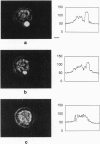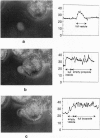Abstract
Experimental evidence is presented that supports the possibility of building a "molecular drill." By the adsorption of a vesicle onto a porous substrate (specifically, a lycopode grain), it was possible to increase the permeability of the vesicle by locally stretching its membrane. Molecules contained within the vesicle, which could not cross the membrane, were delivered to the porous substrate upon adsorption. This general process could provide another method for drug delivery and targeting.
Full text
PDF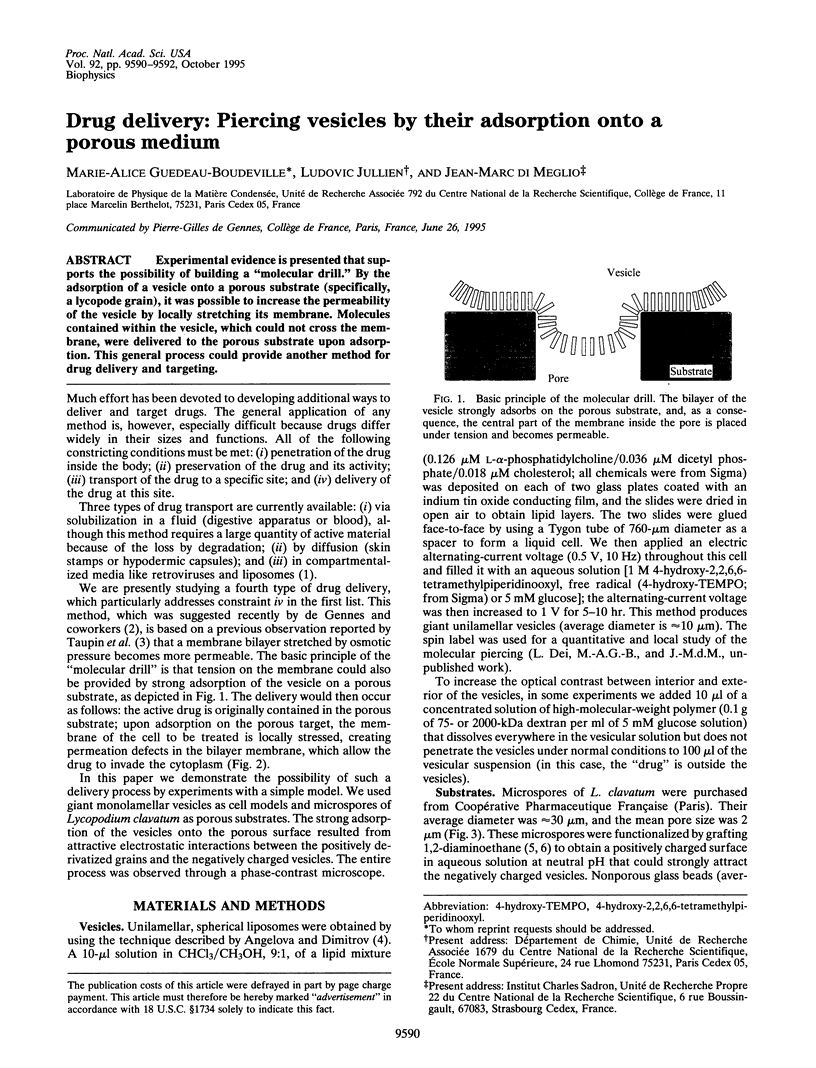
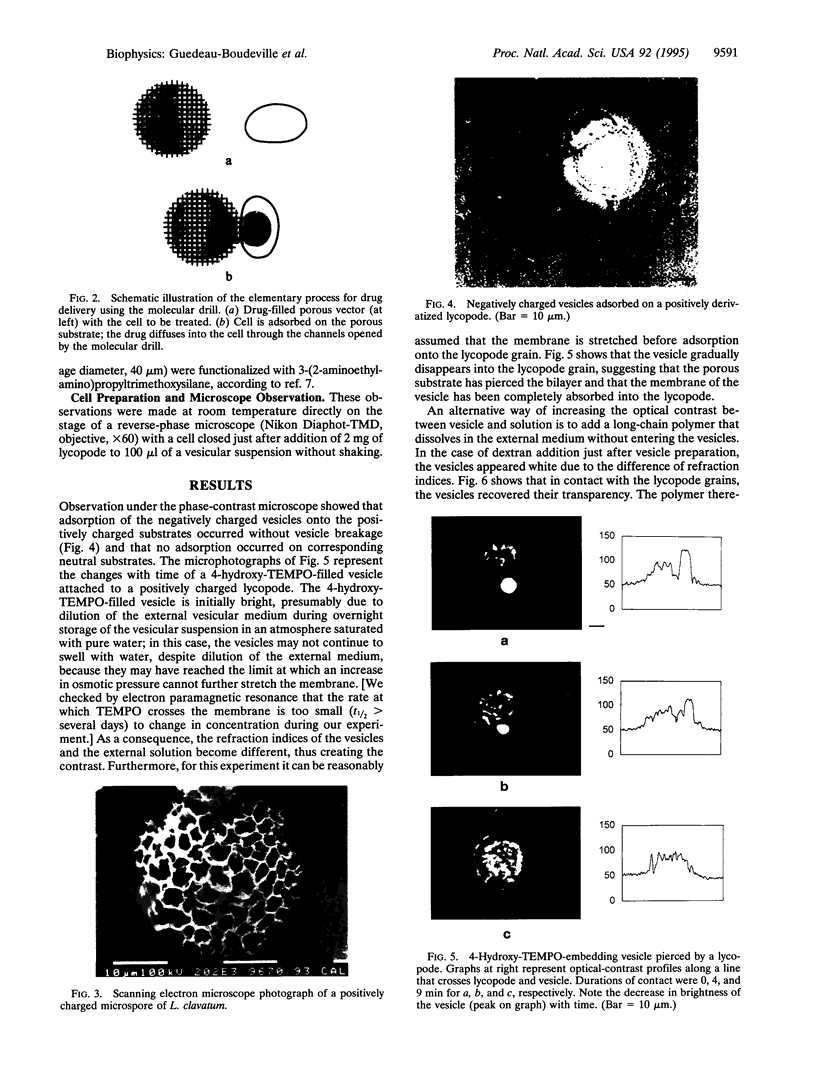
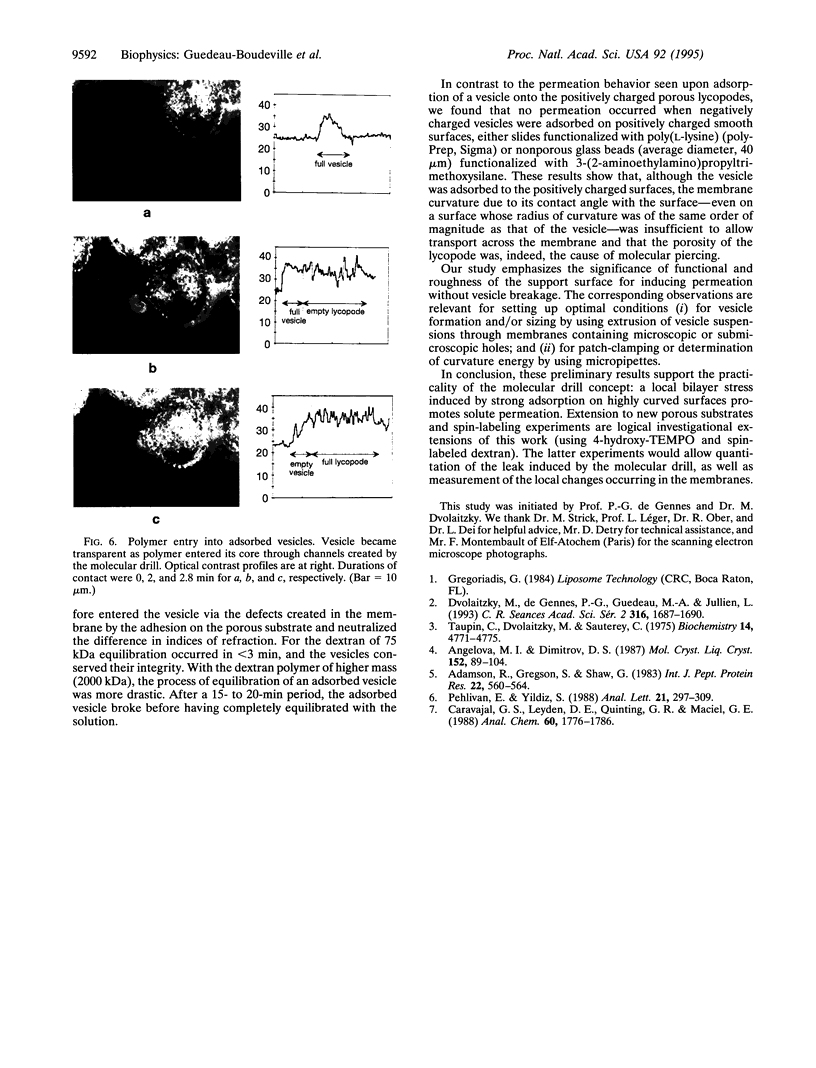
Images in this article
Selected References
These references are in PubMed. This may not be the complete list of references from this article.
- Adamson R., Gregson S., Shaw G. New applications of sporopollenin as a solid phase support for peptide synthesis and the use of sonic agitation. Int J Pept Protein Res. 1983 Nov;22(5):560–564. doi: 10.1111/j.1399-3011.1983.tb02128.x. [DOI] [PubMed] [Google Scholar]
- Taupin C., Dvolaitzky M., Sauterey C. Osmotic pressure induced pores in phospholipid vesicles. Biochemistry. 1975 Oct 21;14(21):4771–4775. doi: 10.1021/bi00692a032. [DOI] [PubMed] [Google Scholar]







